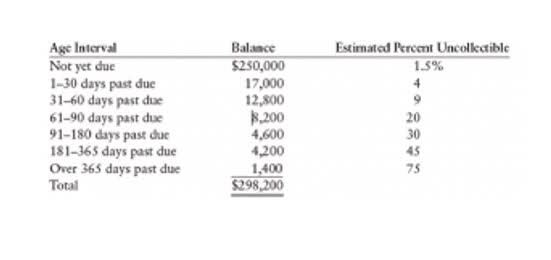
To this end, some companies allow you to connect your business’s accounting software, as well as other tools, to their platform so that they can more easily evaluate your qualifications. With an accounts receivable line of credit, you pay an interest rate based on your balance, and when a customer pays their invoice, the amount is deducted from your current balance. In addition, some lenders will charge you a draw fee, every time you pull on the credit line. An accounts receivable line of credit is a type of invoice financing in which you use your unpaid invoices to finance a credit line. In this case, the line of credit is backed by your invoices and the amount you receive on the line is usually up to 85% of the value of those invoices. When your customer pays the invoice, you receive the remaining 15%, minus the lender’s fees.
Business Loan Calculator
- As the lender is responsible for collecting the payments, the fees charged for this financing are slightly more.
- FundThrough is upfront about its customer requirements For instance, you must have outstanding invoices totaling at least $100,000 or invoices owed to a specific customer.
- Every time sales come in, it feels like the money goes directly to paying off ad campaigns or suppliers, meaning your cash is always tied up.
- Invoice discounting is a common form of invoice financing that works as an asset-based loan, using unpaid invoices as collateral.
For example, simply upload or email an invoice, and the software will automatically extract details and populate fields for your approval. The platform can also detect duplicate invoices, helping you stay in control of your expenses and avoid costly errors. PO funding, or purchase order lending, is a short-term financing option that invoice financing helps businesses fulfill customer orders when they lack the necessary funds to cover production or inventory costs. ABL is a financing method where a business secures a loan or line of credit using its assets as collateral. These assets typically include accounts receivable, inventory, equipment, and sometimes even real estate.
- As your customers pay their invoices, the financing provider will deduct their fees and the advanced amount.
- While this partnership may influence where and how products appear on our site, it in no way impacts our research, recommendations, or advice.
- To qualify for invoice financing, you should have creditworthy customers who have a history of paying on time.
- You can check and monitor your credit score for free with LendingTree Spring.
- We’ve reviewed and tested leading solutions on the market and chose the best accounting software for your business.
Business loan requirements
- Invoice financing is much easier to qualify for than other types of business loans.
- RTS Financial, which has been in business since 1995, takes a modern approach to working with customers and is one of the few services that provides services by way of web and mobile apps.
- Typically, the financing company charges around 1 to 5 percent of the total value of the invoices financed.
- Automate your accounts payable processes with Juni and free up your day for more impactful work.
- Invoice financing is very similar to invoice factoring, as both provide businesses money upfront rather than waiting on clients to pay invoices.
- This is useful for microbusinesses who want one software with multiple functions.
This type of business loan can help you account for gaps in cash flow in order to purchase inventory, pay employees and, ultimately, grow faster. This feature connects the software to your business bank and credit card accounts to provide a daily update of your transactions. It also gives you a daily, rather than monthly, overview of your accounts. A real-time bank-feed feature can assist with reconciliation, which allows you to make it a small daily task rather than a monthly ordeal. In our test drive of Plooto, it was easy to get started managing your accounts payable and receivable by connecting your accounting software and uploading business documents.
What is a small business loan?

Invoice financing rates typically range from 1% to 5% of the invoice value per month. The total cost of your funding will vary, however, based on the structure of your loan, the size of your request and the payment speed of your customer. Invoice financing can be a good idea for businesses that need to cover cash flow gaps, but it can also be expensive. You’ll want to consider the nature of your business, your industry and the urgency of your funding needs to determine if invoice financing is right for you. This technology is powering automation tools that streamline key accounting processes, thus minimizing tedious work.
Sarah is owed £5,000 by a previous client for a completed project, but the invoice has payment terms of 30 days. Sarah agrees to an invoice finance deal that will give her 85% of the invoice up-front, with total fees at 3%. Lastly, some smaller businesses that don’t have access to traditional financing may turn to other alternative short term lenders out of desperation.

You typically don’t need other forms of collateral like real estate, equipment, or inventory to qualify. One of the best perks of invoice financing is that it requires minimal documentation, and you can receive the money within 24 hours after approval. The application and approval process for invoice financing is faster compared to other loan options. Generally, lenders who offer it will only be interested in financing invoices issued to other businesses, not individuals. As every business person knows, there can be a big, long gap between revenues and actual cash flow – especially when you have customers who demand “generous” payment terms and wait until the last day to remit.
How to Qualify for Invoice Financing
- Xero accounting software is for small businesses that want to streamline supplier payments and those who like detailed data visualizations and at-a-glance reporting.
- Our business is built on supporting relationships between people and organizations, relationships that extend across frontiers of all kinds—geographical, financial, industrial, and more.
- When your customers eventually end up paying the factoring company, you will receive the rest of the advance.
- Let’s dive into what you need to know about invoice financing, including what it is, why you might use it, and its advantages and drawbacks.
- Therefore you need to be careful to understand what all of the costs, fees and charges that you may be facing.
Types of small business loans
Last Updated on June 12, 2024 by Bruce
